1. Elvis Presley on The Ed Sullivan Show (1956)
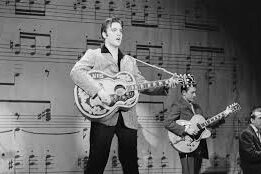
Music has always been more than sound; it’s emotion, rebellion, and connection. When Elvis Presley appeared on The Ed Sullivan Show in 1956, over 60 million people tuned in to see something new. His hip-shaking performance startled conservative America, with cameras even filming him from the waist up to avoid “indecency.” Yet, fans couldn’t look away. Elvis’s charm, confidence, and rhythm broke cultural boundaries and introduced rock and roll to the mainstream. That night, music on television became something electric. It wasn’t just entertainment; it was a movement. Elvis didn’t only become a star; he became the heartbeat of a generation discovering its voice through sound and style.
2. The Beatles on The Ed Sullivan Show (1964)
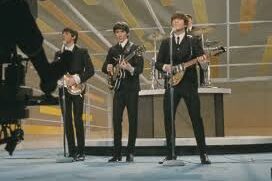
When The Beatles arrived in America, the world seemed ready for something joyful. On February 9, 1964, their first live performance on The Ed Sullivan Show drew 73 million viewers. Teenagers screamed, parents sighed, and history unfolded in real time. The energy was contagious. Overnight, Beatlemania took hold, shaping fashion, language, and art. The British Invasion had begun, and music suddenly belonged to the youth. That night wasn’t just about four boys from Liverpool; it was about optimism after a turbulent decade. The Beatles didn’t simply play songs; they transformed how people felt, proving that melody could unite hearts across continents.
3. Woodstock Festival (1969)
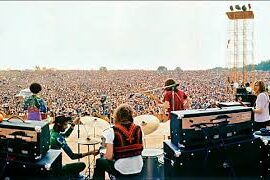
In August 1969, a dairy farm in upstate New York turned into a symbol of peace, love, and unity. Nearly half a million people gathered for three unforgettable days of music and meaning. Performances by Jimi Hendrix, Janis Joplin, and The Who created moments that still echo today. Despite mud, rain, and chaos, Woodstock radiated harmony. It wasn’t just a concert; it was a declaration of spirit. People came for the music and left believing in something bigger than themselves. Woodstock became a generation’s anthem of freedom, a living reminder that sometimes, the loudest voices for peace are sung, not spoken.
4. MTV Launches (1981)
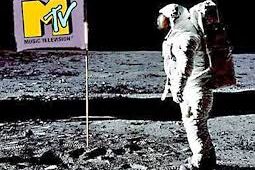
When MTV aired its first video, “Video Killed the Radio Star,” the future of music changed overnight. For the first time, fans didn’t just listen to songs; they watched them come alive. Artists like Michael Jackson, Madonna, and Prince turned visuals into storytelling, blending creativity with performance. Image became power, and music became a full sensory experience. MTV shaped fashion, language, and identity for millions of young viewers. It transformed artists into icons and fans into dreamers. The channel didn’t just play music; it created a culture that still influences how we connect with sound today.
5. Live Aid (1985)
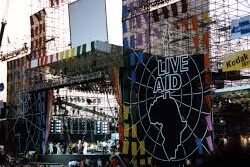
On July 13, 1985, the world tuned in for something greater than entertainment. Live Aid, held simultaneously in London and Philadelphia, united artists and audiences across continents to fight famine in Ethiopia. More than a billion viewers watched legends like Queen, U2, and David Bowie perform. Freddie Mercury’s command of the Wembley crowd became the stuff of history. The event raised millions and reminded people of music’s deeper purpose. Live Aid wasn’t just a concert; it was humanity in harmony. For one day, the planet sang together, proving that rhythm and compassion could share the same stage.
6. Michael Jackson’s Thriller Release (1982)
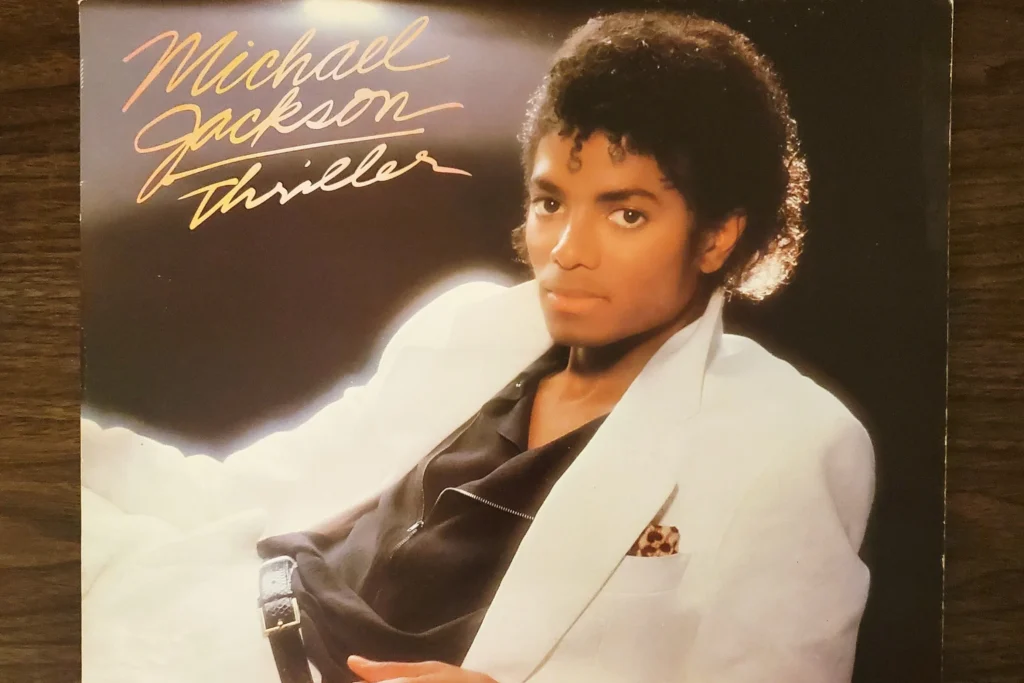
When Michael Jackson released Thriller, the world witnessed a new kind of magic. Every track felt monumental, and the groundbreaking short film for “Thriller” turned music videos into cinematic art. With stunning choreography, storytelling, and style, Jackson blurred the lines between sound and vision. The album shattered records, selling more than 70 million copies and redefining pop culture. It wasn’t just about dancing or singing; it was about transformation. Thriller changed how artists approached creativity, how fans experienced albums, and how the world saw music as something bigger than sound.
7. Madonna’s “Like a Virgin” at the MTV VMAs (1984)
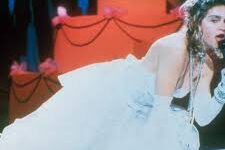
When Madonna stepped onto the MTV stage in a wedding dress singing “Like a Virgin,” she instantly rewrote the rulebook of pop performance. The young artist rolled across the floor and turned innocence into spectacle. Some were shocked, but everyone was watching. That moment launched Madonna from rising star to global phenomenon. She wasn’t afraid to mix vulnerability, confidence, and controversy into one unforgettable act. It was a bold statement about freedom, art, and identity. Madonna didn’t just perform; she claimed her place in music history and taught future generations that power often starts with daring to be yourself.
8. Queen at Wembley, Live Aid (1985)
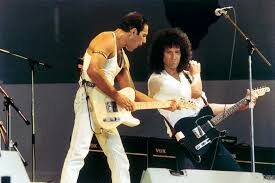
Even in a lineup full of legends, Queen stood apart at Live Aid. Freddie Mercury’s voice echoed across Wembley as thousands clapped to “Radio Ga Ga,” every heartbeat in sync. The connection between band and audience was electric, pure, and unforgettable. It wasn’t about fame or money; it was about music’s ability to unite. For twenty glorious minutes, Queen reminded the world what performance truly means. They didn’t just entertain; they elevated. That day, Mercury showed that passion and presence can turn a song into a shared memory that never fades.
9. Nirvana’s Nevermind Release (1991)
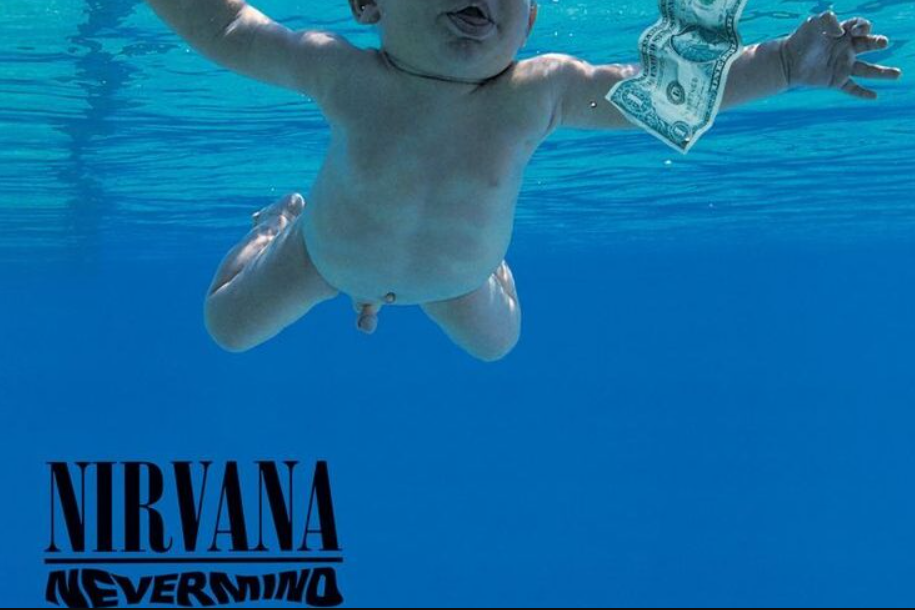
When Nirvana released Nevermind, the music world tilted. With “Smells Like Teen Spirit,” the band captured the frustration and energy of a generation tired of perfection. Grunge wasn’t polished or pretty; it was real. Kurt Cobain’s voice, raw and vulnerable, broke through the noise of ’80s glamour. The album redefined what success meant, giving alternative rock a permanent place in mainstream culture. Nirvana’s rise marked a cultural shift where authenticity mattered more than image. Nevermind wasn’t just an album; it was a mirror reflecting the spirit of youth that refused to stay quiet.
10. Bob Dylan Goes Electric at Newport (1965)
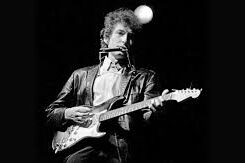
At the Newport Folk Festival in 1965, Bob Dylan picked up an electric guitar and stunned everyone. Known for his poetic folk songs, Dylan’s new sound split the crowd between cheers and boos. It was rebellion disguised as rhythm. Critics were confused, but Dylan was evolving. By blending rock energy with thoughtful lyrics, he opened doors for future artists to experiment fearlessly. That day, Dylan proved that music doesn’t stand still. He didn’t abandon folk; he expanded it. The moment became a symbol of artistic courage, reminding the world that progress often begins with taking one brave risk.
11. The Rolling Stones at Altamont (1969)
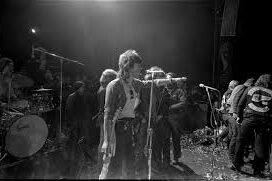
The Rolling Stones’ free concert at Altamont Speedway began with promise but ended in tragedy. What was meant to be a celebration of peace spiraled into violence when a fan was killed during their set. The chaos stood in stark contrast to Woodstock’s harmony earlier that year. Altamont became a cultural turning point, marking the end of the idealistic 1960s. Yet, it also showed the intensity of rock’s power over emotion and crowd energy. The event remains a haunting reminder that music’s beauty and danger often coexist in unpredictable ways.
12. The Rise of Hip-Hop with Sugarhill Gang (1979)
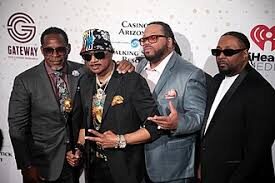
When the Sugarhill Gang released “Rapper’s Delight,” the world heard something fresh. The song’s playful rhymes and steady beat turned underground block-party sounds into mainstream magic. For many listeners, it was their first taste of rap. No one knew it would start a revolution. The track proved that hip-hop could sell, inspire, and evolve. From a Bronx community movement, it grew into a global language of rhythm and resistance. “Rapper’s Delight” wasn’t just a song; it was a spark that ignited decades of creativity, storytelling, and cultural transformation across borders and generations.
13. The Birth of Punk: Sex Pistols on TV (1976)
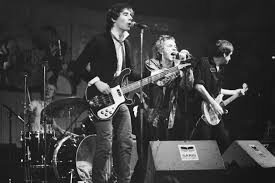
When the Sex Pistols appeared on British television, punk was born in chaos. Their loud defiance and unfiltered words shocked the nation, leaving viewers outraged and teenagers inspired. It wasn’t polished or polite; it was honest. The Pistols didn’t care about fame or approval. They cared about noise, attitude, and authenticity. The moment punk met television, rebellion met opportunity. The scene sparked a cultural shift that influenced fashion, politics, and sound. The Sex Pistols turned provocation into purpose, and from that night, punk became more than a genre; it became a movement.
14. Woodstock ’94 (1994)
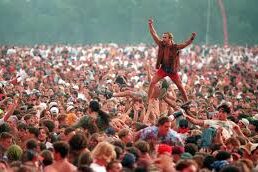
A generation later, Woodstock returned. The 1994 revival brought together old ideals and new sounds, featuring acts like Green Day, Red Hot Chili Peppers, and Nine Inch Nails. When Green Day’s set turned into a muddy free-for-all, it perfectly captured the carefree chaos of the time. It wasn’t as peaceful as 1969, but it was just as passionate. Woodstock ’94 proved that the spirit of music’s unity could evolve with each generation. It celebrated nostalgia, rebellion, and joy all at once, reminding everyone that even in mess, there can be meaning.
15. Tupac and Biggie’s Legacy (1990s)
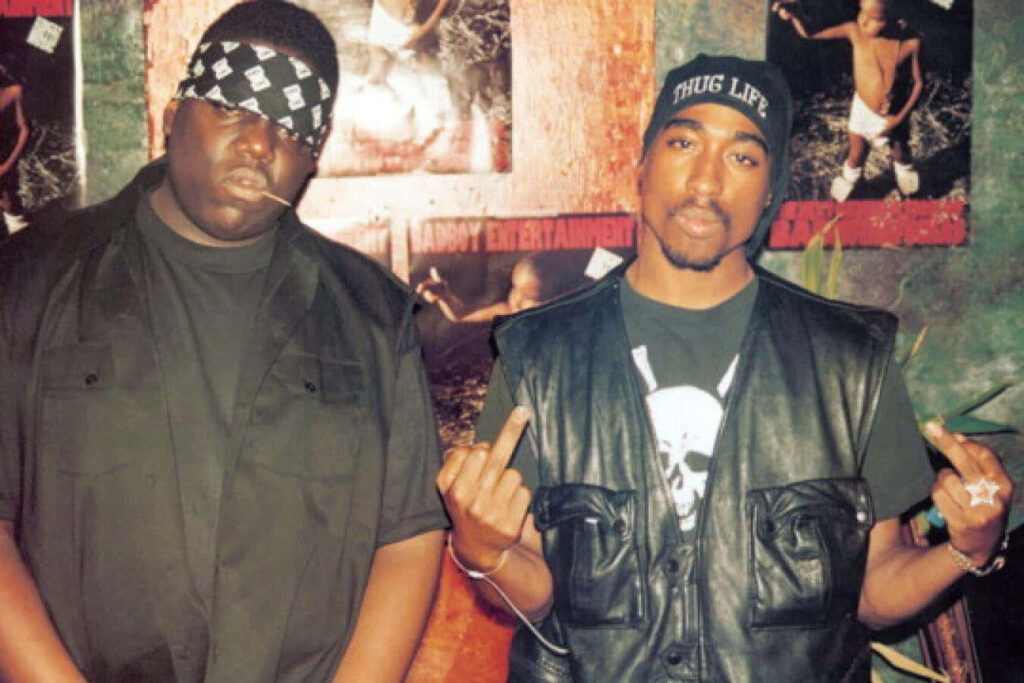
The 1990s gave the world two rap giants whose influence still lingers: Tupac Shakur and The Notorious B.I.G. Their lyrical brilliance, storytelling, and charisma turned hip-hop into poetry. The East Coast–West Coast rivalry between them became cultural drama, but their artistry outshined the tension. Tupac spoke of pain and justice, while Biggie mastered rhythm and wit. Both were lost too soon, but their words never faded. They didn’t just rap; they reflected life’s reality. Their music continues to inspire artists, reminding the world that truth, even when tragic, can still sound beautiful.
16. The Rise of the Compact Disc (1980s)
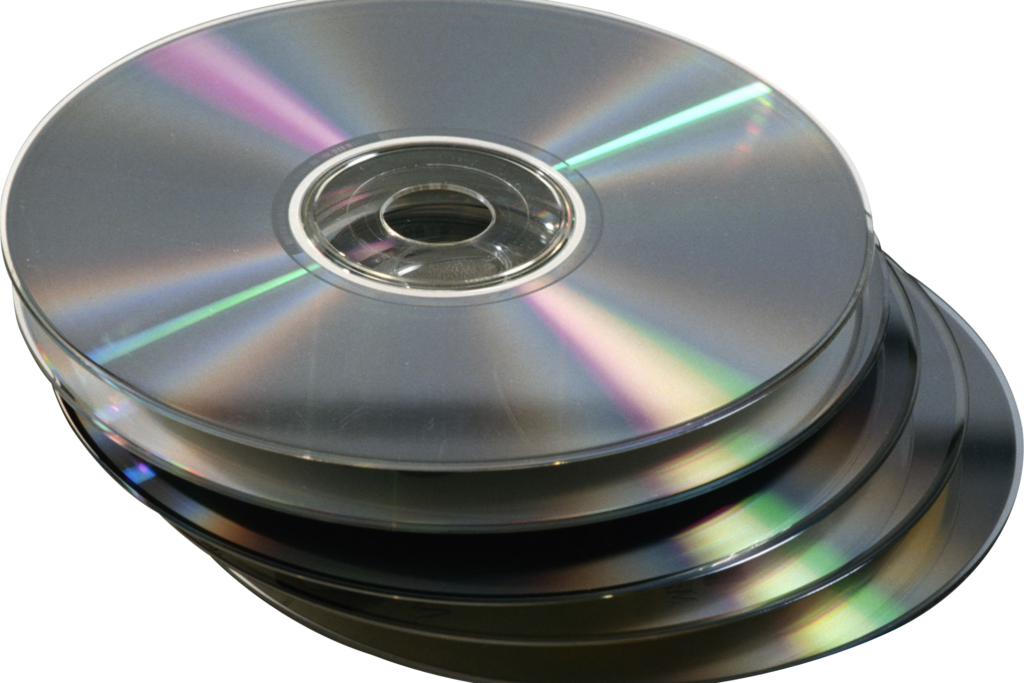
When compact discs arrived, they looked futuristic and felt like magic. Shiny and durable, they promised crystal-clear sound and endless replay without the hiss of tapes or the scratches of vinyl. By the late 1980s, CDs ruled every record store shelf, and artists began producing albums that celebrated the new clarity. Music fans loved the freedom to skip, repeat, and collect. Albums like Dire Straits’ Brothers in Arms became milestones of the format. The CD era changed how people experienced albums, bringing music closer to perfection. It wasn’t just a shift in technology; it was the moment sound met science and turned music into a sleek, modern treasure.
17. Beyoncé at Coachella (2018)
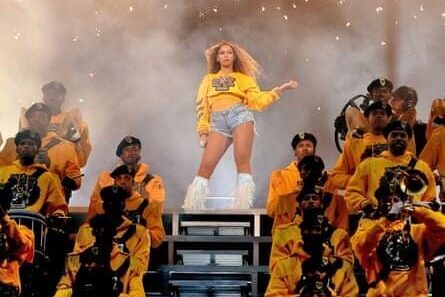
When Beyoncé headlined Coachella, it was more than a performance; it was a cultural celebration. She became the first Black woman to lead the festival, delivering a breathtaking homage to HBCUs, Black pride, and sisterhood. With a live marching band, flawless vocals, and powerful choreography, she fused education, history, and art into a single experience. Fans called it “Beychella,” and rightly so. Every song felt like a lesson in excellence. Beyoncé didn’t just entertain; she elevated. The show became a film, Homecoming, preserving its legacy. It wasn’t only a concert; it was proof that representation and artistry could meet onstage and change the story for generations watching.
18. The Beatles’ Rooftop Concert (1969)
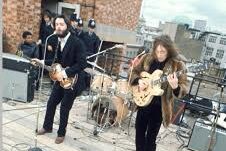
One cold January afternoon, The Beatles climbed to the rooftop of Apple Corps in London and gave their final live performance. Without warning or tickets, they began playing, and soon the city paused to listen. Their voices echoed over the rooftops, mixing joy and nostalgia in perfect harmony. Police eventually stopped the show, but not before history was made. It was raw, spontaneous, and unforgettable. The rooftop concert symbolized freedom, friendship, and farewell all at once. It wasn’t planned to be iconic, yet it became one of music’s most cherished goodbyes, capturing The Beatles exactly as they were: bold, playful, and beautifully timeless.
19. The Rise of Napster (1999)
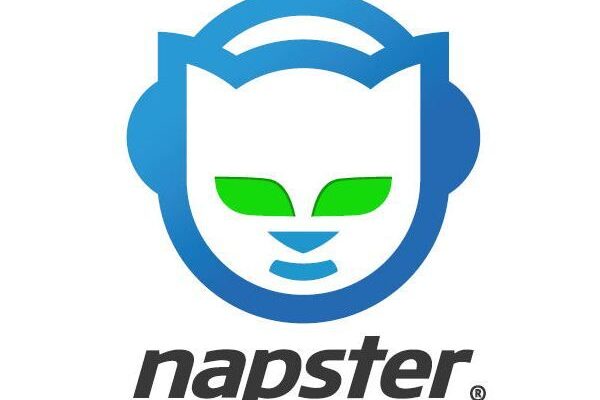
When Napster appeared, the entire music industry changed overnight. Suddenly, anyone could download songs for free and share entire libraries with friends around the world. For fans, it was freedom. For artists and labels, it was chaos. Napster’s creators didn’t invent music sharing, but they made it unstoppable. The service sparked lawsuits, shut down, and yet paved the way for iTunes, Spotify, and streaming as we know it. Napster proved that the internet would rewrite how people discover and consume songs. It was messy, rebellious, and groundbreaking all at once. From those first downloads, digital music was born, forever altering how we listen.
20. Michael Jackson’s Motown 25 “Moonwalk” (1983)
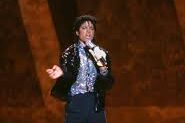
When Michael Jackson stepped on stage at Motown’s 25th anniversary, no one expected what would happen next. Dressed in sequins and white gloves, he performed Billie Jean with unmatched precision. Then came the move that froze time: the moonwalk. Smooth, silent, and impossible, it became an instant symbol of cool. Audiences around the world replayed it endlessly, trying to copy the glide. That single moment redefined stage performance and inspired generations of dancers. Jackson didn’t invent the moonwalk, but he made it eternal. The night reminded everyone that music could be seen as much as it was heard, and magic could live in motion.
21. Prince at the Super Bowl (2007)
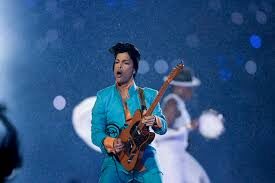
When Prince took the Super Bowl stage, a storm was raging. Rain poured, thunder rolled, and yet he smiled and played harder. Performing “Let’s Go Crazy” and “Purple Rain” in the rain itself, he turned the moment into legend. The audience watched in awe as real lightning flashed behind him, perfectly timed with every guitar solo. It wasn’t just a concert; it was pure defiance. Prince didn’t fight the weather; he embraced it. His set proved that true artists turn challenges into beauty. The performance ended in purple light and applause that felt endless, reminding the world that greatness thrives in the storm.
22. The Rise of Spotify (2008)
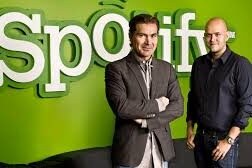
When Spotify launched, music finally became limitless. No more stacks of CDs or waiting for radio hits. With a single app, millions of songs became accessible instantly. It changed how people discovered and shared music. Playlists replaced albums, and algorithms began predicting moods. For listeners, it felt like freedom; for artists, it brought both opportunity and challenge. Spotify built a bridge between discovery and convenience. It made music a daily companion for work, travel, and life itself. The platform didn’t just modernize listening; it redefined it, turning sound into an experience tailored to every heartbeat and moment of the day.
23. Adele at the Grammys (2012)
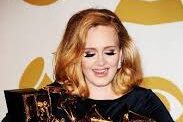
When Adele performed “Rolling in the Deep” at the Grammys after vocal surgery, it was more than a comeback; it was a revelation. Her voice soared with clarity and emotion, silencing doubts and filling the room with raw honesty. She sang without gimmicks, without spectacle, just power and soul. The audience rose in thunderous applause, and Adele smiled through tears. That night, she won six awards, but her greatest victory was her authenticity. In a world of effects and distractions, Adele reminded everyone that music’s truest form is connection. Sometimes, one song sung from the heart can heal both artist and listener.
24. Taylor Swift’s Re-Recording Revolution (2021)
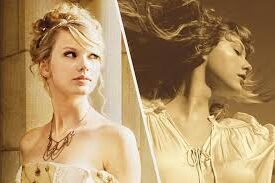
When Taylor Swift announced she would re-record her old albums, it was more than a creative decision; it was a stand for ownership. She refused to let others control her art and invited fans to join her journey. Her re-released albums topped charts, proving that authenticity always wins. Swift’s choice sparked industry-wide conversations about artists’ rights and inspired others to fight for creative freedom. Through patience and brilliance, she turned business battles into musical empowerment. The re-recordings weren’t revenge; they were rebirth. Taylor transformed struggle into strength, showing that taking back your story can become your greatest masterpiece.
25. BTS Takes Over the World (2010s–2020s)
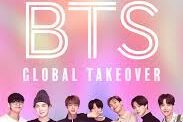
BTS didn’t just sing; they connected hearts around the globe. Their songs about youth, love, and self-acceptance resonated across cultures and languages. From sold-out stadiums to the United Nations stage, their influence reached beyond music. They blended sharp choreography, sincerity, and creativity into a universal message of hope. Fans called the experience a movement, not just fandom. BTS redefined global pop, breaking barriers that once seemed impossible. Their success proved that connection is stronger than borders. Through passion, teamwork, and truth, BTS showed that music’s greatest power is to unite us all in one rhythm of understanding.
Music will always tell the world’s story in rhythm and emotion. From Elvis’s hips to BTS’s harmonies, every beat marks a moment that shaped how we live, dress, dance, and dream. These moments remind us that music is more than sound; it’s our shared heartbeat. So, which song changed your world first? Tell us in the comments and keep the rhythm going.
This story 25 Iconic Music Moments That Changed Pop Culture was first published on Daily FETCH


